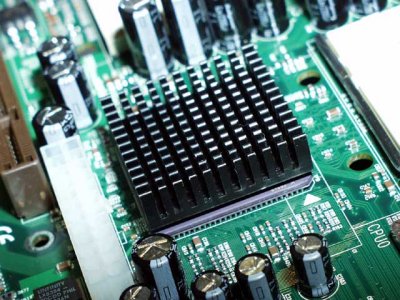AMD announced today at LinuxWorld events in New York and Paris the first public demonstration of "VirtuHammer," the recently announced high-performance tool developed by AMD and Virtutech that allows software developers to write and test 64-bit programs for AMD's next-generation "Hammer" family of processors. Additionally, AMD is showing a dozen AMD Athlon™ processor-based servers and workstations running on the Linux operating system at LinuxWorld Conference & Expo shows in New York City and Paris. LinuxWorld is the premiere tradeshow for developers, supporter and end users of the Linux operating system.
AMD is approaching both LinuxWorld events with great optimism as the company, along with Linux operating system vendor SuSE (www.suse.com), reports the achievement of significant milestones in the open-source community's efforts to port Linux to AMD's x86-64 technology. The x86-64 technology extends the x86 instruction set to enable 64-bit computing and is the backbone behind AMD's planned 64-bit processor family, code-named "Hammer." AMD's "Hammer" family is planned for commercial introduction in the first half of 2002.
AMD first publicly introduced the x86-64 technology specification at LinuxWorld San Jose in August 2000. In just five months, the open source community has succeeded in making software development tools, including the GNU C compiler and Binary Build Tools, comply with the x86-64 standard for software, e.g. the Application Binary Interface (ABI). All development activities for this port are taking place in public forums on the www.x86-64.org website.
Een voor veel tweakers waarschijnlijk interessantere ontwikkeling is de aankondiging dat AMD op LinuxWorld een aantal quad Athlon systemen heeft gedemonstreerd. Helaas is er buiten de weinigzeggende press release nog geen info bekend over deze quad systemen, niet op de AMD sites en niet op de Linux nieuwssites. Het is de vraag of deze systeempjes daadwerkelijk zijn uitgerust met vier processors of dat het simpelweg gaat om een cluster van vier single processor nodes. AMD maakt in de press release onderscheid tussen een 4 node cluster en quad processor systemen. Het lijkt daarom waarschijnlijk dat er daadwerkelijk quad CPU systemen worden gedemonstreerd: [/break]
LinuxWorld Demos at the AMD Booth
- Virtutech Simics "VirtuHammer" simulator powered by a 1.1GHz AMD Athlon processor on SuSE 7.0 Linux
- Polywell 1.1GHz AMD Athlon processor-based workstation running Softimage on SuSE 7.0 Linux
- Polywell 1.1GHz AMD Athlon processor-based workstation running POVRay on SuSE 7.0 Linux
- Utron 1.2GHz AMD Athlon processor-based workstation running Nastran/Patran fom MSC software on MSC Linux
- Utron 1.1GHz AMD Athlon processor-based workstation running Blender on SuSE 7.0 Linux
- Polywell 1GHz AMD Athlon processor-based desktop running GIMP on Caldera 2.4
- Polywell 1GHz AMD Athlon processor-based desktop running Quake 3 from id on Mandrake 7.2
- LinuxNetworX 4 node 1-2U 1.1GHz AMD Athlon processor-based cluster running streaming media demos
- Utron 2 x 2U Quad 1.1GHz AMD Athlon processor-based server running EnFuzion from TurboLinux on TurboLinux
- Utron 4U 1.1GHz AMD Athlon database processor-based server running Oracle 8i on SuSE 7.0 Linux
- Utron 2U Quad 1.1GHz AMD Athlon processor-based server running a Zeus Web server from Zeus on SuSE 7.0
Het is wachten op details over de configuratie van de op LinuxWorld gedemonstreerde quad Athlon systemen. AMD maakt mogelijk gebruik van een setup met twee 760MP chipsets die via een LDT crossbar switch aan elkaar gekoppeld worden, maar het is ook niet ondenkbaar dat AMD een gehackt quad Alpha moederbord heeft ingezet.
 |
Thanks Stunter voor de tip.

